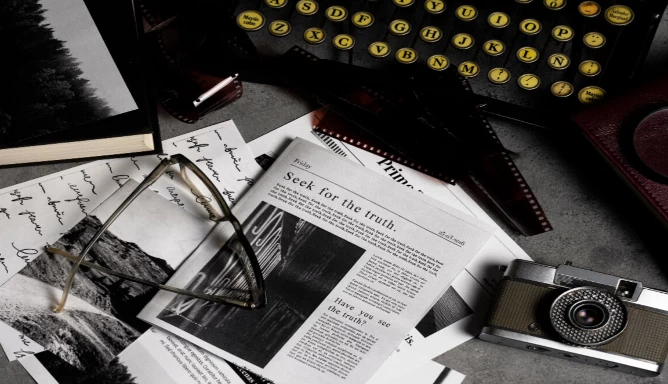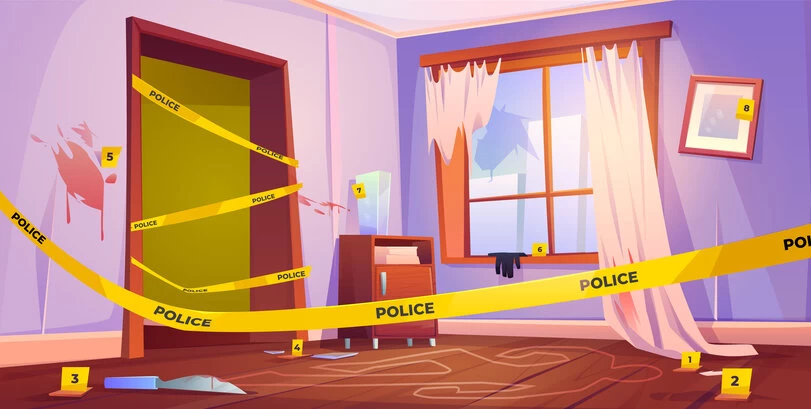Camcorder to USB Conversion for Law Enforcement: Using Video Evidence in Criminal Investigations
Convert camcorder footage to USB for seamless use in criminal investigations. Trust us to preserve important video evidence and help solve cases faster.
5 minutes to read

In the field of law enforcement, video evidence plays a critical role in solving crimes and bringing perpetrators to justice. Camcorder to USB conversion has become an increasingly popular method of processing and organizing this type of evidence. By converting camcorder footage to USB, investigators can streamline the investigative process and ensure that important evidence is preserved and easily accessible for use in criminal investigations.
Digital Video Evidence for Camcorder to USB Conversion
Law enforcement agencies are constantly seeking new and effective ways to gather and present evidence in criminal investigations. One such method is through the use of camcorder footage. However, the storage and preservation of this footage can be challenging. That's where camcorder to USB conversion comes in. This process allows law enforcement to easily transfer camcorder footage to a digital format that is easy to store and access, and can provide valuable evidence in criminal investigations.
Digitizing Camcorder to DVD: The Need for Preservation
The need for the preservation of evidence is essential in criminal investigations. Camcorder footage has proven to be an effective tool in gathering evidence and presenting it in court. However, analog formats such as VHS tapes and DVDs can degrade over time, leading to the loss of valuable information. Digitizing camcorder to DVD is the first step in preserving this evidence.
Digitizing camcorder to DVD involves transferring the footage from the camcorder to a DVD. DVDs are a type of digital storage media that offer a number of advantages over analog formats. They are more durable, take up less space, and can store more information.
However, even digital formats are not completely foolproof. DVDs can still degrade over time, leading to the loss of data. That's where camcorder to USB conversion comes in.
 A murder place fenced with yellow police tape illustration.
A murder place fenced with yellow police tape illustration.
Transferring Camcorder Video to Digital: The Advantages of USB Conversion
Camcorder to USB conversion is a process by which camcorder footage is transferred to a USB drive. USB drives are a type of flash memory storage device that offer a number of advantages over DVDs and other storage media. They are smaller, more durable, and can store larger amounts of data.
When it comes to law enforcement investigations, camcorder to USB conversion offers a number of benefits. Firstly, it allows law enforcement to easily transfer their footage to a digital format that can be easily stored and shared. This means that valuable information about criminal investigations can be preserved and easily accessed by law enforcement officers, prosecutors, and defense attorneys.
Secondly, USB drives are more durable than DVDs and other storage media. DVDs can easily scratch or break, leading to the loss of data. USB drives, on the other hand, are much more durable and can withstand a greater amount of wear and tear.
Finally, USB drives offer larger storage capacities than DVDs. This means that law enforcement agencies can store more data on a single USB drive than they could on a single DVD. This is especially important for large criminal investigations that generate a significant amount of footage.
Using Video Evidence in Criminal Investigations
The use of camcorder footage as evidence in criminal investigations has become increasingly common in recent years. This is due in part to the development of digital technology and the ease with which camcorder footage can be transferred and stored in a digital format.
Camcorder footage can provide valuable evidence in criminal investigations. It can capture the actions of suspects and witnesses, provide a visual record of crimes in progress, and document the activities of law enforcement officers.
In addition, the use of camcorder footage as evidence can help to provide a more accurate and comprehensive picture of events. Eyewitness testimony can be unreliable, and memories can fade over time. Camcorder footage provides an objective record of events that can help to fill in gaps in testimony and provide a more complete picture of what happened.
 Advertisement of a tape digitizing service with an image of two VHS tapes with Scrabble letters “ Movie” on them on a blue background.
Advertisement of a tape digitizing service with an image of two VHS tapes with Scrabble letters “ Movie” on them on a blue background.
Preserving Evidence in a Digital Age
Camcorder to USB conversion is just one way in which digital technology is helping law enforcement agencies to preserve evidence in a digital age. With the ability to easily transfer footage to a digital format, law enforcement officers can ensure that valuable information about criminal investigations is not lost to time.
In addition, digital video files can be easily shared and transferred between different departments, agencies, and even countries. This can be particularly useful in investigations involving multiple jurisdictions or when collaborating with international law enforcement partners.
Another advantage of converting camcorder video to digital format is the ability to enhance and analyze the footage using specialized software. This can include sharpening blurry images, adjusting brightness and contrast, and even zooming in on specific areas of the video. These enhancements can make it easier to identify suspects, vehicles, and other key details that may have been missed in the original footage.
Transferring camcorder video to digital format also allows for easier storage and organization of video evidence. Rather than storing physical tapes or discs in boxes or filing cabinets, digital video files can be stored on hard drives or cloud-based storage systems. This makes it easier to search for and retrieve specific video evidence as needed.
Of course, there are also some potential drawbacks to consider when digitizing camcorder video for law enforcement purposes. One concern is the possibility of data loss or corruption during the conversion process. It is important to ensure that the transfer is done using high-quality equipment and that multiple backups are made to prevent the loss of important evidence.
Another potential issue is the need to ensure the authenticity of digital video evidence. In order to be admissible in court, video evidence must be properly authenticated and verified as unaltered. This can be challenging with digital evidence, as it is easier to edit or manipulate digital files than physical tapes or discs.
To address this concern, law enforcement agencies may use specialized software or encryption techniques to secure digital video evidence and prevent unauthorized access or alteration. Additionally, it is important to maintain a detailed chain of custody for the digital evidence to ensure its admissibility in court.
In conclusion, the process of converting camcorder video to digital format has become increasingly important in law enforcement investigations. Digital video files provide a number of advantages over physical tapes or discs, including easier storage and organization, enhanced analysis and editing capabilities, and improved sharing and collaboration opportunities. However, it is important to carefully consider the potential risks and challenges associated with digitizing video evidence and to take appropriate steps to ensure the authenticity and integrity of the digital files. With proper precautions and attention to detail, the use of digital video evidence can greatly improve the effectiveness of law enforcement investigations and help bring criminals to justice.
